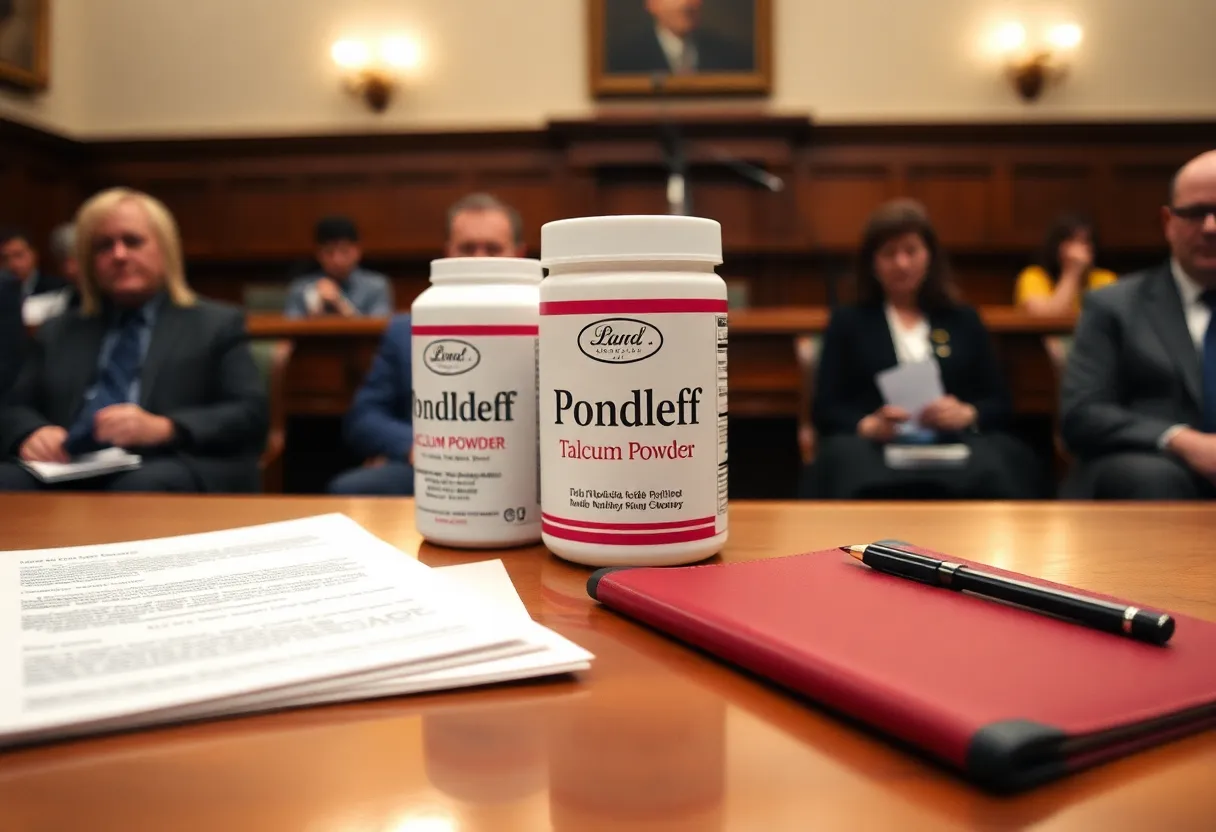Portland, Maine: A Lawsuit Shakes Confidence in Talcum Powder Safety
In a case that has raised eyebrows across the country, a man from Portland, Maine, has taken legal action against the well-known company Johnson & Johnson. Andrew Curtin is alleging that the talcum powder products made by the company contributed to the death of his beloved wife, Cynthia Cartwright. This lawsuit is a significant one, as it sheds light on ongoing concerns surrounding the safety of talcum powder.
A Tragic Diagnosis
The story begins back on April 10, 2017, when Cynthia received a heartbreaking diagnosis: she had mesothelioma, a serious and often terminal cancer that mainly affects the lungs. According to the lawsuit, Cynthia was a frequent user of Johnson & Johnson’s talc products, and her illness is claimed to be a direct result of inhaling and ingesting asbestos that the products allegedly contained.
The complaint states that Cynthia’s long-time use of these products led to her cancer diagnosis, describing the situation as a tragic consequence of using a product that was meant to be safe. The lawsuit claims that Johnson & Johnson should have been aware of the risks and failed to provide appropriate warnings or instructions about the potential dangers associated with their products.
Oh, the Risks!
The implications of this lawsuit are quite serious, as it alleges that for decades, Johnson & Johnson knowingly offered talc powder products that contained harmful and potentially carcinogenic materials. It emphasizes that the company was aware of the dangers linked to talc and yet continued to sell these products without proper labeling or warnings.
Johnson & Johnson’s Response
In reply to the allegations, Johnson & Johnson has firmly denied any wrongdoing. The corporation states that the Food and Drug Administration (FDA) holds the primary authority over cosmetic talc products and determines their safety. They argue that the FDA has consistently found cosmetic-grade talc to be safe for use and has not required any warnings for consumers.
Moreover, the company has a long history of defending its products, having previously faced multimillion-dollar lawsuits related to claims that its baby powder caused various forms of cancer, including ovarian cancer and mesothelioma. A spokesperson for Johnson & Johnson reassured the public by stating, “Johnson’s Baby Powder has been a trusted product for more than 100 years, and decades of independent scientific evaluations have repeatedly confirmed that Johnson’s Baby Powder does not cause cancer.”
Recent Developments
As the legal battle unfolds, the lawsuit is seeking a jury trial and claiming damages that exceed $25 million, highlighting the potential financial and emotional toll this case may have on the company if they lose. Recently, a magistrate judge has set a timeline for both parties, with the trial expected to commence by August 4, 2025. It’s a lengthy wait, but it’s crucial time for the legal teams to prepare their arguments.
A Pattern of Claims
This lawsuit is not an isolated incident. Back in September, Johnson & Johnson proposed an eye-watering $8.2 billion settlement aimed at resolving claims from more than 60,000 individuals who believe their ovarian and gynecological cancers were linked to the company’s talc products. It’s evident that the company has faced mounting pressure and scrutiny regarding the safety of its products over the years.
With all this in mind, the case raised by Andrew Curtin not only serves as a personal tragedy but also tackles important questions about consumer safety, corporate responsibility, and the ongoing battles faced by those affected by cancer related to talcum powder. As the tale unfolds, many will be watching closely to see what transpires in this highly publicized lawsuit.
Stay tuned for more updates as this case develops, and let’s hope it brings forth some much-needed answers for all those affected.



















